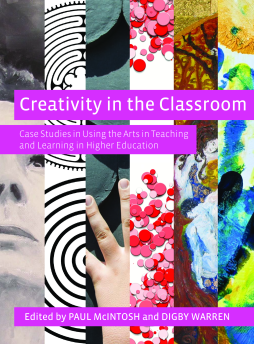
Additional Information
Book Details
Abstract
The aim of this book is to present alternatives to this instrumentalism and its impact upon critical thinking and learning. It provides illustrations that through the use of the creative arts and humanities, flexible and creative teaching and learning can take place that goes beyond the delivery of pre-existing knowledge and enables critiques of socially constructed thinking at various levels. This approach can foster deeper awareness of self, one another and the world, richer engagement with study, greater confidence and resilience. In essence, the teaching methods illustrated in this book provide the means to dialogue and debate in the classroom and to support personal, academic and social integration. Through this process, spaces are created for transformative learning to occur. Another premise is that, when used, these methods should be methodologically grounded and rigorous; their validity should be visible and they should have purpose and utility as teaching and learning practices; and in these case studies, there are some compelling examples of how this can be achieved.
Table of Contents
| Section Title | Page | Action | Price |
|---|---|---|---|
| Cover | Cover | ||
| Half Title | i | ||
| Title | iii | ||
| Copyright | iv | ||
| Contents | v | ||
| Apologies for absence | vii | ||
| Acknowledgements | ix | ||
| Introduction: The Current Educational Climate: Why the Creative Arts and Humanities are so Important to Creativity and Learning in the Classroom | 1 | ||
| PART I: Encouraging Creativity in the Classroom | 9 | ||
| Chapter 1: Using the Creative Arts for Collaboration | 11 | ||
| Chapter 2: Introducing Arts-based Inquiry into Medical Education: ‘Exploring the Creative Arts in Health and Illness’ | 23 | ||
| PART II: Using Performance | 41 | ||
| Chapter 3: Using Cinema to Enhance the Relevance of Economics to Students' Lives | 43 | ||
| Chapter 4: Fascinatin' Rhythm: Tapping into Themes of Leadership and Management by Making Music | 57 | ||
| Chapter 5: A Dramatic Approach to Teaching Applied Ethics | 73 | ||
| PART III: Using Poetry | 87 | ||
| Chapter 6: Using Poetry to Create Conditions for Dialogue in a Postgraduate Course on Managing Diversity | 89 | ||
| Chapter 7: Teaching and Using Poetry in Healthcare | 101 | ||
| Chapter 8 : Gaining a Wider Perspective on Life in Medical Education | 115 | ||
| PART IV: Using Imagery | 123 | ||
| Chapter 9: Beyond Words: Surfacing Self in End-of-life Care Using Image-making | 125 | ||
| Chapter 10: Fashion Students Engaging in Iconic Designs in a Business World | 135 | ||
| Chapter 11: Storytelling and Cycles of Development | 149 | ||
| Chapter 12: Developing Reflective Learning Journals | 165 | ||
| Chapter 13: The Overlooked: Landscapes, Artistry and Teaching | 181 | ||
| Chapter 14: Mirror Mirror: Experiential Workshops Exploring ‘Self’ in Social Work Education and Practice | 193 | ||
| Chapter 15: The Labyrinth: A Journey of Discovery | 209 | ||
| PART V: Learning Technologies and Assessment | 225 | ||
| Chapter 16: Alternatives to the Essay: Creative Ways of Presenting Work for Assessment | 227 | ||
| Chapter 17: Creativity-mediated Training, Social Networks and Practitioner Enquiry in Higher Education | 245 | ||
| Conclusion: Arts-based Inquiry as Learning in Higher Education: Purposes, Processes and Responses | 257 | ||
| Index | 271 | ||
| Back Cover | Back Cover |
